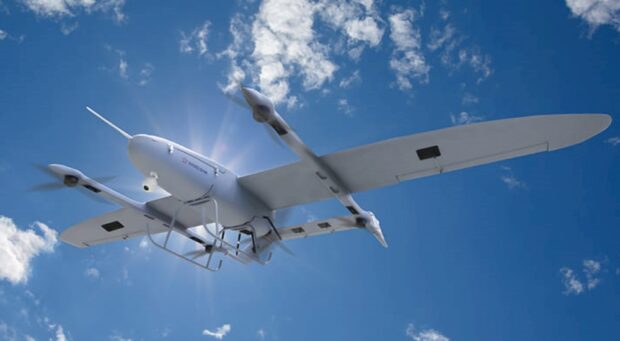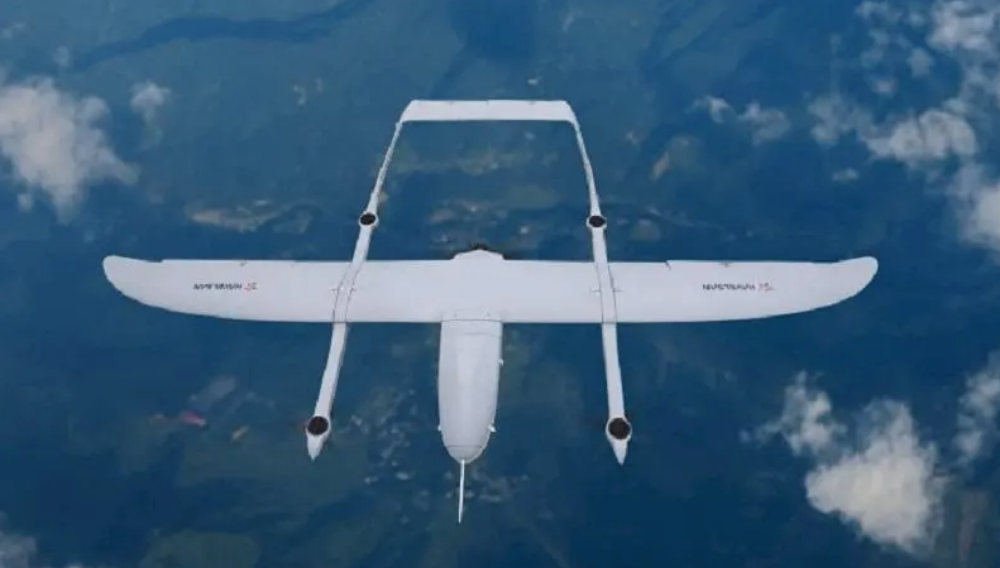Turkey’s Havelsan exhibited its latest iteration of indigenously developed fixed-wing vertical take-off and landing (VTOL) swarm-capable autonomous Baha unmanned combat aerial vehicle (UCAV) at the Africa Aerospace and Defence (AAD) 2022 expo, held from 21 to 25 September, in South Africa.
Baha (Bulut Alti Insansiz Hava Araci) is a prototype of a sub-cloud autonomous vertical take-off and landing unmanned aerial vehicle developed for the needs of the border security forces.
BAHA is a part of HAVELSAN’s crucial project, HAVELSAN R&D and Engineering Director Mehmet Onur Özçelik stated that when BAHA first emerged, it was a platform used to test our domestic and national autopilot software and swarm algorithms.
The main purpose of continuing BAHA’s tests was primarily to accurately define, see and test the needs of our armed forces in the region. By the way, this test platform itself has also been developed and improved.
BAHA was Upgraded
This work on BAHA has been completed and BAHA has been updated. Currently, our flight tests are being carried out with a platform with completely different features as a new design, and it has been stated that the presence in the field will continue to test this platform a lot. BAHA is not just a product designed for our armed forces, it is one of our products that we want to export to our friendly and allied countries.
In this context, this product is introduced to many countries at different events. Tests and demo studies related to this are ongoing.
BAHA is able to detect and diagnose very remotely
The new BAHA has many features, and one of the most important is that it can now fly in unsuitable weather conditions. In this context, it will be able to fly in certain rain and precipitation conditions, especially with its impermeability feature in cold weather.
In addition, as an imaging system, there will be electro-optical systems with cameras that are much more advanced and capable of detecting and diagnosing from a much longer distance.
It will be on solutions that will enable BAHA to fly stably in an environment where there is compression. In order to develop these, HAVELSAN has carried out many test activities in the field. The production of the new prototype is finished and user demo studies have now started in flight tests. It is foreseen that it will be put into use together with the digital unity project in the coming period.
The Digital Unity Project is a project consisting of unmanned aerial vehicles, unmanned land vehicles and unmanned sea vehicles. Together with the command and control system developed by HAVELSAN behind it, it actually constitutes the infrastructure of the future combat system as a fully integrated system. In this context, HAVELSAN has serious product studies.
BAHA has a 90 percent locality rate. Its design is completely domestic and its body is produced entirely by our domestic companies. The components used in its content are mostly purchased from domestic companies.
It was also stated that testing and performance tests are continuing intensively on BAHA’s new platforms that can carry different types and weights of payloads. Work continues at full speed for new agreements at home and abroad.
It was reported that the UAV successfully completed the flight test in an altitude of 7,500 ft (2,300 m) at a distance of 10 km (6.2 mi) far from the Ground Support Center.
The latest design of Baha includes a boom-mounted T-tail instead of earlier exercised boom-mounted inverted V-tail. The Baha is operated from a land vehicle. A further development for the central control of a swarm of 20-30 UAVs, each operated from one land vehicle, is in progress. It has a maximum takeoff weight (MTOW) of 30 kg (66 lb) and its payload capacity is 6 kg (13 lb).
Sources: Press Release; Military Leak


